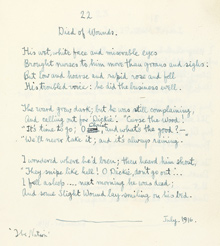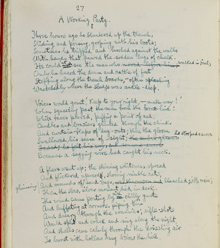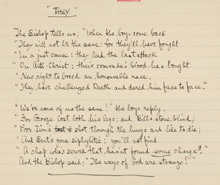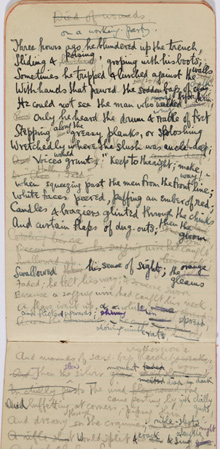War Poet
I must go on finding beauty here & now; not the sort of beauty I used to look for.
Diary entry, 7 June 1916
Sassoon’s first poems inspired by the conflict shared characteristics with his pre-War verse: lucid, graceful, but often at one remove from a convincing portrayal of lived experience. In his memoir Good-bye to All That Robert Graves, who had seen combat earlier than Sassoon, recalled telling him that the trenches would ‘soon change his style’. During 1916 Sassoon’s poetry developed in two ways: it incorporated more precisely detailed descriptive passages, sometimes heightened by soldierly slang, and it began to employ sardonic or sarcastic twists. Sassoon described his poems of the latter kind as having ‘the quality of satirical drawings. They were deliberately devised to disturb complacency.’
Sassoon submitted his poems to periodicals in England for publication. The Westminster Gazette refused the earliest of his ‘outspoken’ poems, ‘In the Pink’, on the grounds that it might prejudice recruiting, but the anti-militarist Cambridge Magazine, to which he sent work via Edward Dent, was readier to accept poems that might perturb ‘the average Englishman’.

'Died of Wounds', a corrected fair copy in the notebook given to Sassoon by Ottoline Morrell. From MS Add. 9852.

A fair copy of the opening stanzas of ‘A Working Party’, with subsequent revisions by Sassoon. From MS Add. 9852.

'They', first printed in the Cambridge Magazine. This is the autograph copy sent by Sassoon to Edward Dent. MS Add. 7973/S77b.

